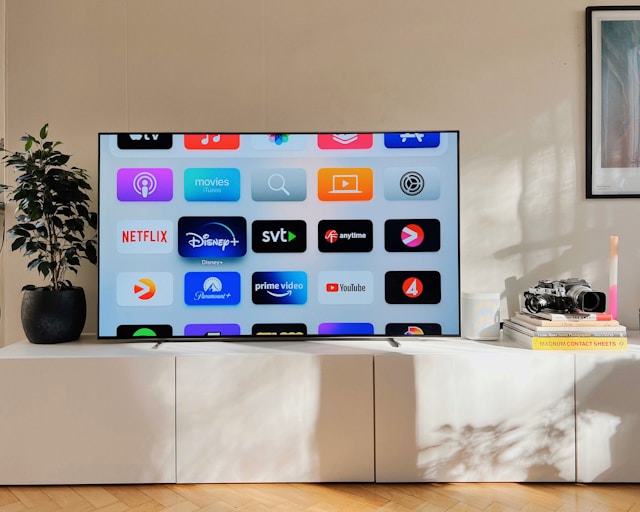The entertainment industry has undergone a seismic transformation in the past decade. What was once dominated by scheduled broadcasts, physical media, and box office releases has now shifted dramatically toward on-demand, internet-based content consumption. Streaming platforms like Netflix, Spotify, YouTube, and Disney+ have redefined how we watch, listen, and interact with media altering not just consumer behavior, but the very foundation of the industry itself.
In this article, we’ll explore how streaming changed entertainment, the challenges it introduced, and what the future holds for content creators, distributors, and audiences worldwide.
The Collapse of Traditional Media Models
Before the streaming era, entertainment followed a rigid structure. Television shows aired on a fixed schedule. Films had to be seen in theaters or waited on for DVD. Music was purchased by album, whether physical or digital. These models relied on linear consumption and gatekeeping by large studios, networks, and record labels.
The arrival of streaming platforms disrupted all of that.
Cable TV subscriptions have been steadily declining as more viewers opt for streaming services. The “cord-cutting” trend has severely impacted ad revenues for traditional networks. Movie theater attendance also took a hit especially after 2020, when studios began releasing major films directly to streaming platforms.
Physical media sales, including DVDs, Blu-rays, and CDs, have dropped significantly, replaced by digital-first content consumption. The convenience of accessing thousands of titles at your fingertips has made older distribution models feel outdated.
A Culture of On-Demand Control
One of the most profound ways streaming changed the entertainment industry is through the rise of on-demand content. Viewers no longer have to wait for a specific time to watch a show or hear a song they can consume content when and where they want, across devices.
This shift has introduced new consumer behaviors:
-
Binge-watching entire seasons in a weekend
-
Skipping ads with paid subscriptions or premium tiers
-
Creating personalized libraries with likes, playlists, and watchlists
-
Relying on algorithmic recommendations rather than TV guides
The user is now in control, and that control has created higher expectations for availability, convenience, and instant gratification.
Global Access and Diverse Storytelling
Streaming platforms have also made content more globally accessible than ever before. In the past, foreign films, international TV shows, or niche genres often struggled to reach mainstream audiences. Today, thanks to platforms like Netflix and Amazon Prime Video, global content is just a click away.
Korean dramas, Spanish thrillers, Indian epics, and European documentaries have found massive international audiences. Subtitles, dubbing, and localization have allowed for broader cultural exchange, while platforms have started investing directly in local productions in various countries.
This global expansion not only increases viewership but also opens the door for more diverse storytelling. Creators from underrepresented communities now have more avenues to reach audiences beyond geographic and cultural borders.
Empowering Independent Creators
Another major shift caused by streaming services and content creation platforms is the empowerment of individual creators. The barriers to entry in the entertainment industry have significantly lowered.
You no longer need a major studio deal to produce a show, or a record label to release music. Platforms like YouTube, TikTok, Spotify, and Patreon have enabled creators to connect directly with audiences and often monetize that relationship.
This democratization of content means:
-
Niche content has a viable path to success
-
Independent artists can build fanbases and careers
-
Podcasters, vloggers, and micro-influencers have become part of the mainstream media ecosystem
It’s a new era where authenticity and community matter as much as production quality.
The Streaming Economy and the Battle for Dominance
With every major media company launching its own service Disney+, HBO Max, Paramount+, Peacock the competition between streaming platforms has sparked what many call the “streaming wars.” Companies are spending billions on original content, exclusive licensing deals, and marketing to capture viewer loyalty.
This new economy is subscription-driven, with models ranging from monthly access to freemium versions with ads. While consumers benefit from choice and innovation, the growing number of subscriptions can also lead to fragmentation and fatigue.
Economically, streaming has created new business challenges:
-
Revenue per user is often lower than traditional cable
-
Royalty structures are controversial, especially in music streaming
-
Licensing battles and content removals frustrate loyal viewers
The shift has made it harder for artists and writers to rely on traditional residuals, fueling labor disputes and demands for more transparent compensation models.
Challenges Facing the Streaming World
As streaming platforms continue to grow, so do concerns about sustainability and ethics in the digital media landscape.
Some of the biggest challenges include:
-
Content saturation: With so many shows, films, and channels, users often experience “choice fatigue.”
-
Algorithm dependence: Viewers often get funneled into echo chambers, missing out on diverse or lesser-known content.
-
Privacy and data use: Algorithms require user data, raising questions about how platforms collect, store, and use personal information.
-
Labor and compensation issues: Creators, actors, and writers continue to push for fair pay, especially for streamed content that lacks traditional residual structures.
These issues highlight the need for balance between technological innovation and ethical content production.
What the Future Holds
The impact of streaming on media is irreversible and still unfolding. With technologies like AI-generated content, interactive storytelling, and virtual reality around the corner, digital content consumption trends will likely continue to evolve.
Streaming platforms are no longer just distributors they’re also studios, tech companies, and data giants. As they grow, the future of entertainment will be shaped by how these platforms adapt to viewer needs, creator demands, and regulatory frameworks.
Conclusion: Adapting to a Streaming-First World
The question isn’t whether streaming changed entertainment, but rather how deeply it has restructured the way we consume and create content. It disrupted traditional models, empowered creators, globalized storytelling, and introduced new economic paradigms.

